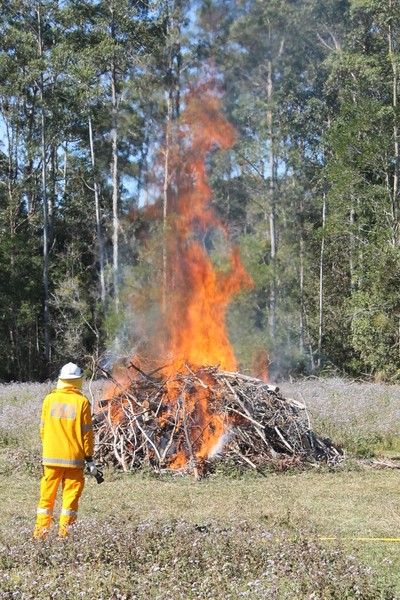
THE Rural Fire Service (RFS) is pressing ahead with bushfire mitigation activities in Noosa following a recent cold snap and wet weather.
RFS North Coast regional manager Peter Hollier said residents would notice smoke in the air in coming weeks as brigades and landholders conducted hazard reduction burns after a brief rain-induced lull in June.
The activities are part of Operation Cool Burn, which is a multi-agency approach to reduce the threat of bushfires and will target areas such as Cooroibah, Doonan, Marcus Beach, Noosaville, Sunshine Beach and Tewantin.
“The RFS has been working proactively with landholders on the Sunshine Coast and in the Wide Bay Burnett regions since April, with more than 180 hazard reduction burns taking place during that time,” Mr Hollier said.
“Recent rainfall and cooler temperatures in the region pushed back some burns, particularly in areas that experienced moderate to high levels of rain. Weather permitting, these burns are scheduled to take place between now and September.”
Mr Hollier said more than 30 localities stretching from the Sunshine Coast to Bundaberg, including Noosa, had been identified as priority areas for mitigation activities.
“These areas may pose potential fire hazards during bushfire season, so the RFS has been working with landholders and government agencies to target these hotspots,” he said.
The burns will coincide with a suite of community education initiatives to equip residents with the information they need to prepare themselves and their properties ahead of bushfire season.
“Hazard reduction burns are one component of Operation Cool Burn. The RFS has visited a number of communities since April to discuss steps people can take to prepare for bushfire season,” Mr Hollier said.
“This work is continuing, and a series of street meets and door knocking activities are scheduled for bushfire-prone areas.”
Mr Hollier said it was important that residents removed fire hazards from their properties and developed a bushfire survival plan.
“It is essential for everyone to have a bushfire survival plan to detail how exactly you will prepare and what action you will take if threatened by a bushfire,” he said.
“A well-prepared home will increase the chance of survival.”
Mr Hollier said the plan should be in writing, practised regularly and take into consideration the ages and physical capabilities of everyone in the house including children and the elderly.
“Once a bushfire survival plan is in place, it is important for people to know what action to take when a bushfire approaches,” he said.
Mr Hollier said steps included monitoring the media for updates, wearing protective clothing, drinking water and moving loose furniture inside.
“On a severe, extreme or catastrophic fire weather day, the safest option for survival is leave well in advance of any fire,” he said.
“Vulnerable members of the community, including the young and elderly, are advised to leave well before bushfire strikes and not be part of any plan to stay and defend their property.”
For further information on preparing for the bushfire season, and to download a bushfire survival plan, visit www.ruralfire.qld.gov.au.






